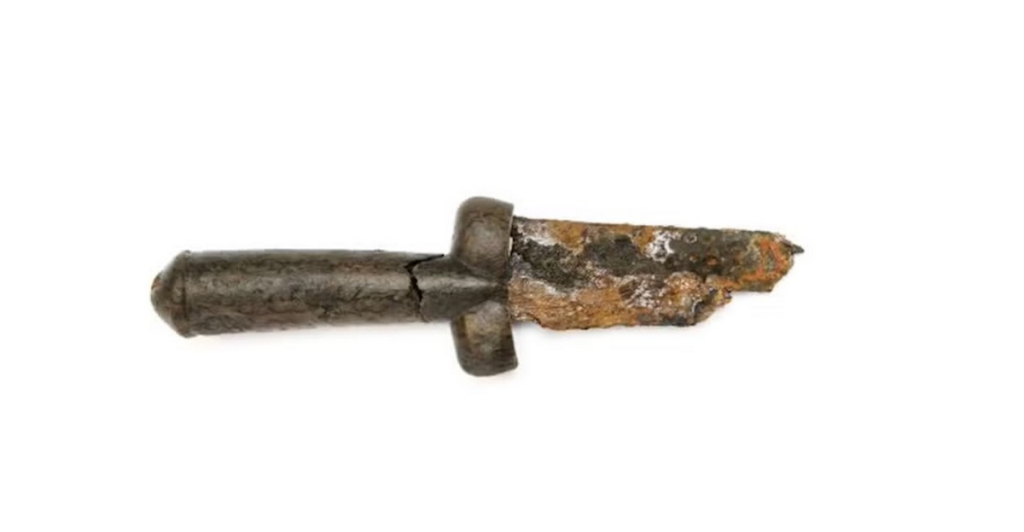A 15th-century artifact discovered at a historic fortress is turning heads for more than just its age.
Others are reading now
Centuries of war, ruin, and reconstruction haven’t buried all of Gothenburg’s secrets. After nearly a decade of archaeological digs at the site of Sweden’s former Gullberg Castle, researchers have uncovered a rare and eyebrow-raising find: a medieval “testicle dagger” with a phallic-shaped hilt that’s drawing both curiosity and historical insight.
The item, dated to the 15th century, was found during excavations between 2014 and 2023 tied to the Västlänken railway expansion.
According to Popular Science, the dagger’s wooden handle—crafted from curly birch—is remarkably well-preserved despite its iron blade being broken and chipped. Its distinctive design features a penis-like pommel and testicle-like orbs, leaving little ambiguity about how it earned its nickname.
A Phallic Weapon With a Practical Purpose
While the design may seem provocative to modern eyes, historians believe it had both symbolic and functional uses.
Also read
The hilt’s bulging grip would have enhanced handling during combat, especially when striking armored opponents. Researchers from Sweden’s State Historical Museum also noted that the handle could double as a tool for bludgeoning in close quarters.
Archaeologist Anders Altner said in a museum statement:
We didn’t think there would be as much left as there was.
The dagger joins a larger collection of weapons and everyday items recovered from the site, including crossbow bolts, pistols, beer taps, a limestone sundial, and a palm-sized sand spreader once used to blot ink.
Gullberg Castle’s Long—and Violent—History
Strategically positioned on Gothenburg’s Gullberg hill overlooking the Göta River, the fortress known as “Gullbergs hus” was first built in the 13th century. It was later rebuilt in the 15th century and renamed Westgötha Leijon. The site witnessed multiple sieges—by Danish forces in 1523 and again in 1612—before being decommissioned in 1822.
Today, a train line runs beside the ruins, and the castle’s legacy is preserved through detailed archaeological documentation and public exhibitions.
The now-infamous dagger is on display at the Historical Museum in Stockholm until January 2026, alongside other relics from the Gullberg excavation. For those unable to make the trip, a digital exhibition booklet is available online.


